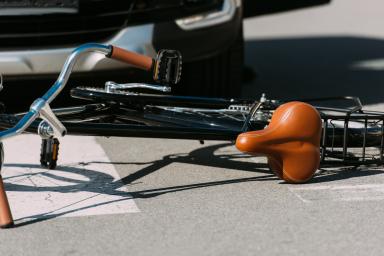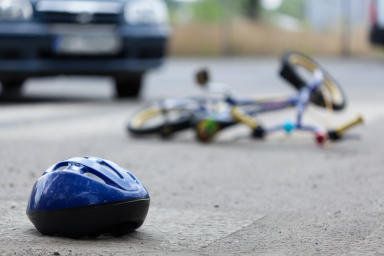Ohio Bicycle Laws

The Ohio State Highway Patrol found that throughout the course of 2022, there were 1,095 bicycle-related accidents that happened within the state. Most crashes occurred in Cuyahoga County, with 223 recorded in total, while Franklin County had the second-highest number of accidents at 126. Across the state, there were 151 instances involving serious injuries, 554 related to minor injuries, and seven recorded fatalities.
Taking these statistics into account, state and local government agencies within Ohio have stepped up efforts to enforce ordinances and remind bicyclists to follow laws and guidelines to preserve their safety on the road. The regulations cover the proper operation of bicycles on designated paths and roadways, along with the use of helmets, lights, and reflectors.
To help those who end up in bicycle accidents, Ohio has insurance laws and legal statutes that victims can refer to when they pursue compensation for their losses. They can work with their attorneys to identify applicable insurance policies, deduce the total amount of damages they can recover, prepare their claim or lawsuit within the state’s given deadlines, and learn whether their respective cases fall under the Ohio Revised Code’s exemptions.
Ohio Guidelines On Bicycle Helmets and Equipment
Ohio currently has no state-wide ordinance that requires all bicyclists to wear helmets. The state only requires the riders and passengers of class 3 electric bikes to do so, regardless of age. In spite of this, government agencies strongly encourage bicyclists to wear helmets for improved protection against serious injuries. Additionally, municipalities throughout the state have their own laws requiring bicyclists of a certain age to wear helmets when riding.
In terms of specific examples, the cities of Akron, Cincinnati, and Marietta require all bicyclists under the age of 16 to wear a helmet. In areas such as Waynesville and Madeira, regulations are imposed for those under 17. Brooklyn and South Euclid require helmets for bicyclists aged below 14, while ordinances in Strongsville are directed toward those below 12.
While Ohio lacks a state-wide bicycle helmet law, its Revised Code does require both bicycles and electric bikes to be equipped with a front lamp capable of emitting a white light that is visible up to 500 feet to the front and 300 feet to the sides. They must also have a red rear lamp that has a flashing or steady beam visible from a minimum distance of 500 feet. Additionally, a red rear reflector visible from 100 to 600 feet must be used alongside the rear lamp. These can be supplemented by other lamps and reflectors, provided that those installed on the front are white and those at the rear are red.
Aside from this equipment, bicycles in Ohio must have a device that can emit an audible signal to alert other people on the road. However, riders may not equip their bicycles with any kind of whistle or siren.
Ohio Laws On Bicycle Operation
Under the Ohio Revised Code, bicyclists must follow the same traffic ordinances and regulations that other motorists adhere to. This means that they must obey traffic signs and signals and exercise due care when navigating state roads alongside other riders, vehicles, and pedestrians. They must also comply with roadway laws that are specifically enforced for bicycle users.
Ohio’s bicycle-related rules and regulations include the following:
Bicyclists may only ride on a bicycle that has a permanent and regular seat attached.
Bicyclists may not use their bicycle to carry more people than it was designed for.
Bicyclists may only ride up to two abreast within a single lane, except in areas that have been designated for the exclusive use of bicycles.
Bicyclists must ride as close to the right side or edge of the road as possible and along with the flow of traffic; they can leave the edge of the road if they need to avoid other vehicles, obstacles, and potential hazards.
Bicyclists may not attach their bicycles or themselves to any moving vehicle.
Bicyclists must always use proper hand signals when coming to a stop or making a turn.
Unless specified otherwise under state law, those who fail to adhere to these regulations will be found guilty of a minor misdemeanor. Any offenders who have already committed a previous offense within a period of one year will be charged with a misdemeanor of the fourth degree or the third degree if they have previously committed two or more offenses.
Is Ohio a No-Fault State for Bike Accidents?
No, Ohio adheres to the at-fault doctrine for bicycle accident cases, meaning that those responsible for an accident must shoulder the resulting damages of those involved. This allows victims to pursue compensation from the offending parties through an injury claim or lawsuit.
To pay for a victim’s losses, an at-fault driver will most likely use their auto liability coverage, which they can obtain to comply with Ohio’s requirements for motorists regarding financial responsibility. According to the state’s Bureau of Motor Vehicles, the minimum amounts required for auto insurance are as follows:
$25,000 for the injuries or death of one person.
$50,000 for the injuries or deaths of multiple people.
$25,000 for property damage.
For victims, another applicable insurance option is MedPay coverage, which is offered as part of auto insurance. This will cover any expenses involving medical treatment for injuries, and it can be used if the victim gets hurt in an accident, either as a motorist or a bicyclist. The minimum amount of MedPay coverage offered to those purchasing auto insurance is $5,000.
In addition to auto liability and MedPay coverage, victims can be compensated for their losses with the help of uninsured and underinsured motorist coverage. These options apply if the victim is involved in an accident where the offending driver has insufficient or no insurance. Similar to auto liability coverage, the minimum amounts for uninsured and underinsured motorist coverage are $25,000 for injuries per person and $50,000 for injuries per accident.
How Much Can Someone Sue for a Bicycle Accident in Ohio?
Ohio does not limit the total amount of economic damages that bicycle accident victims can recover. This means that plaintiffs may be compensated in full for any damages resulting from financial expenditures, including medical expenses, repair costs, and lost income. However, the state does have a cap on the total non-economic damages that can be recovered. These damages can involve intangible losses that stem from a victim’s mental anguish, emotional distress, trauma, and loss of companionship.
According to state law, victims can only recover up to $250,000 or three times the amount of their economic damages, whichever is greater. If a plaintiff’s total noneconomic damages fall under the latter category, their damage award is also subject to a limit of $350,000 per person and $500,000 per accident.
It should be noted that the cap on noneconomic damages will not apply in cases where the victim suffers a permanent injury that prevents them from independently taking care of themselves. This exception also applies if the person’s injury resulted in permanent physical disfigurement, the loss of a bodily organ system, or the loss of use of a limb.
In addition to these damage caps, Ohio’s modified comparative negligence rule may affect the total damages that bicycle accident victims can recover. Under this rule, a victim who is partially at fault for an accident will have their total damage award deducted based on the percentage of their liability. If the plaintiff’s fault exceeds 50%, they will be barred from recovering any damages.
What Is Ohio’s Statute of Limitations for Bicycle Accidents?
Ohio law states that bicycle accident victims have up to two years to take legal action against at-fault parties in the form of a personal injury claim or lawsuit. This applies to both cases involving bodily injuries and those that concern only property damage, with the statute of limitations starting on the date of the accident. If the victim in an accident case dies from their injuries, their representative or dependents also have a maximum of two years to file a wrongful death claim, starting from the victim’s date of death.
The court will probably dismiss a plaintiff's claim or lawsuit if they fail to file within these specified deadlines. However, there are special cases wherein Ohio’s statute of limitations is “tolled” or paused, giving plaintiffs more time to take legal action.
A possible exception to the statute occurs if the individual who is entitled to take legal action in a case is under the age of 18 or of unsound mind. For such people, the statute only begins once they turn 18 or recover from their mental disability. Additionally, if a plaintiff becomes mentally disabled after the statute has commenced and is subsequently confined in a hospital or institution, the duration of their confinement will not be counted towards the statute’s two-year period.
Ohio's statute of limitations is also tolled in cases where the defendant is absent from the state or takes steps to conceal their liability. State law dictates that the statute will not begin until the defendant returns to the state or the concealment is discovered. Their period of absence or concealment will also not be counted as part of the statute’s duration if the two-year period has already begun counting down.
Legal Resources for Ohio Bicycle Accident Victims
Ohio State Bar Association
The Ohio State Bar Association has a number of public resources and services available for state residents with legal concerns and queries. Those who seek an attorney through the use of Lawyer Referral Information Services can refer to the directory on the association’s website to find LRIS listings by county. People can also visit the Legal Help section for basic information concerning various areas of the law, including personal injury and criminal justice. Lastly, the website’s Lawyer Ethics & Discipline section offers details on how to file a complaint against a judge or lawyer who is suspected of misconduct.
Ohio Department of Transportation - Bike & Walk
The Bike & Walk section on the Ohio Department of Transportation’s website is open to visitors who wish to learn about local walking and biking policies. The section also provides access to a digital copy of the Ohio Bikeways Brochure, which showcases a map of bicycle routes throughout the state and has a directory of related resources for cyclists.
Ohio Department of Public Safety - Crash Report Search and Retrieval
People who are involved in traffic accidents in Ohio can look for reports involving crashes through the Department of Public Safety’s Crash Report Search service. They can search for a specific report using its crash number, date, and county, as well as the name of the law enforcement agency that investigated the accident. Each report requires up to six weeks to become available on the DPS database. Those who wish to obtain a printed copy of their accident report must contact the investigating agency involved since DPS reports are not considered official documents. For additional inquiries, people can send an email to traffstats@dps.ohio.gov.
Expertise.com StaffAuthor
Step into the world of Expertise.com, your go-to hub for credible insights. We don't take accuracy lightly around here. Our squad of expert reviewers, each a maestro in their field, has given the green light to every single article you'll find. From rigorous fact-checking to meticulous evaluations of service providers, we've got it all covered. So feel free to dive in and explore. The information you'll uncover has been stamped with the seal of approval by our top-notch experts.




